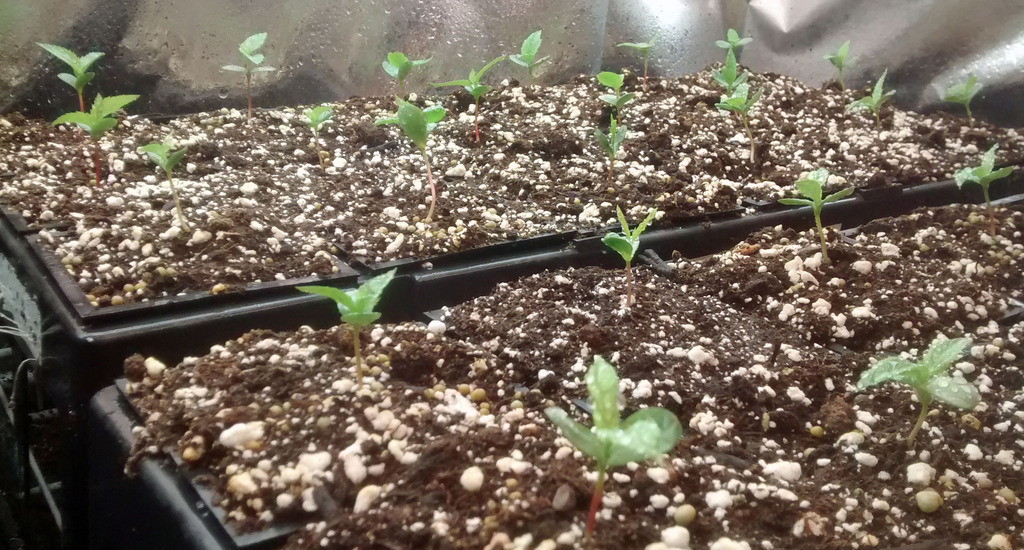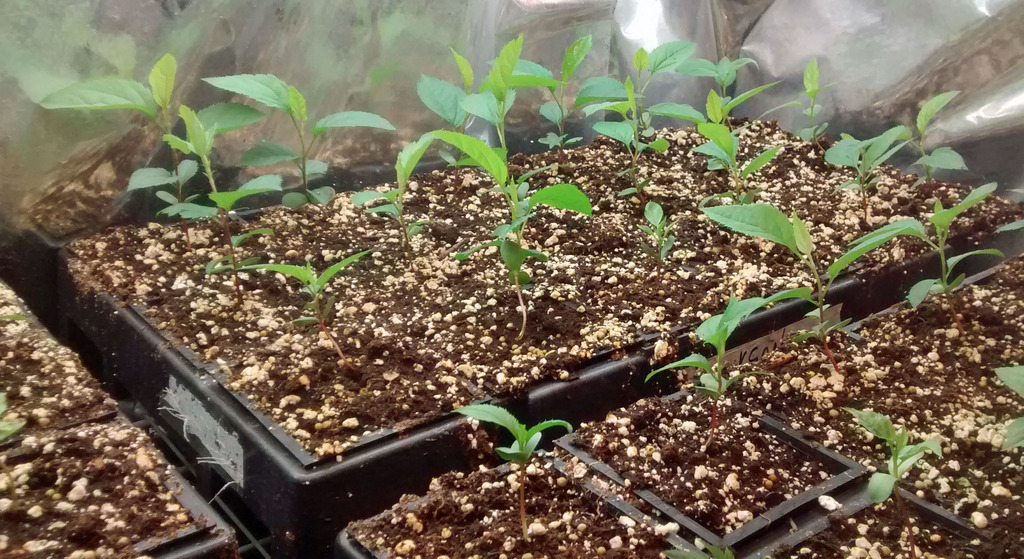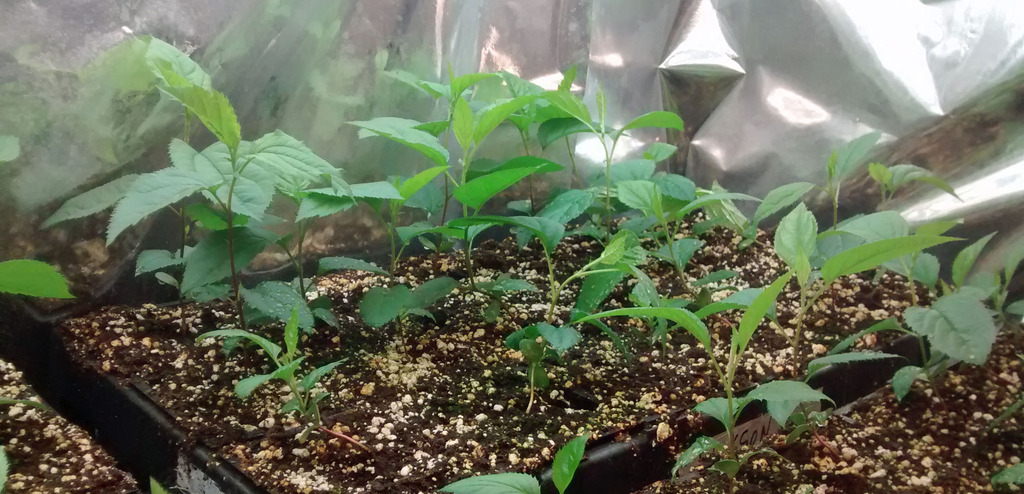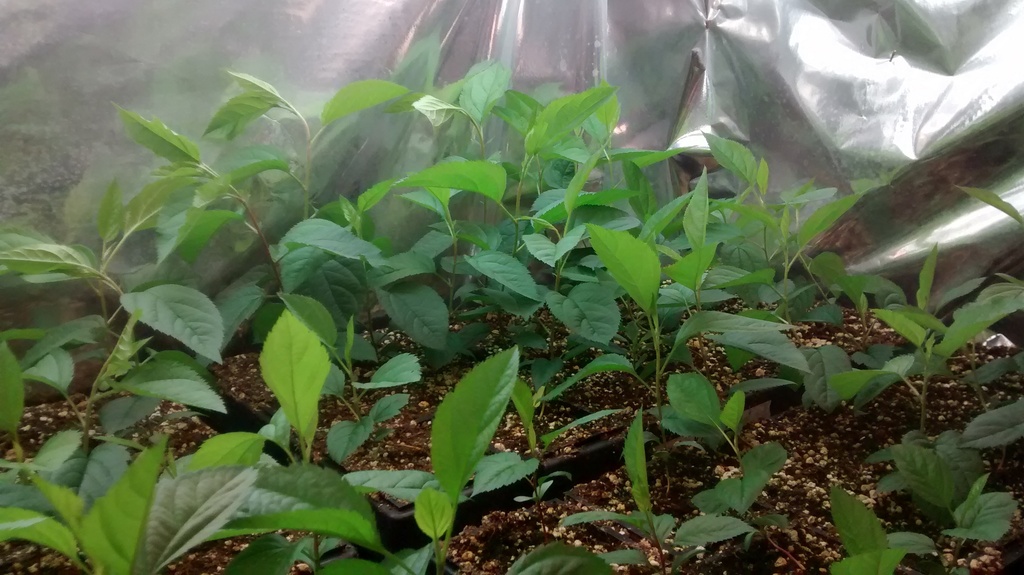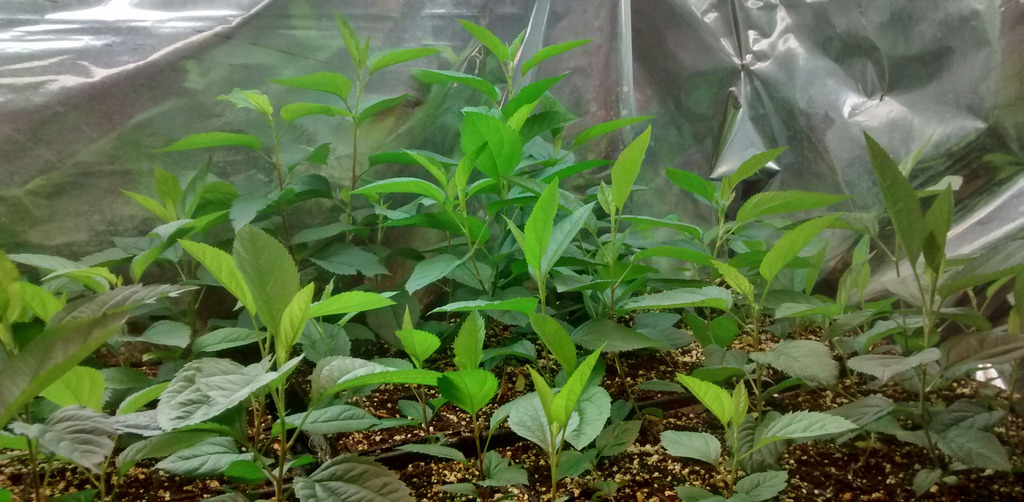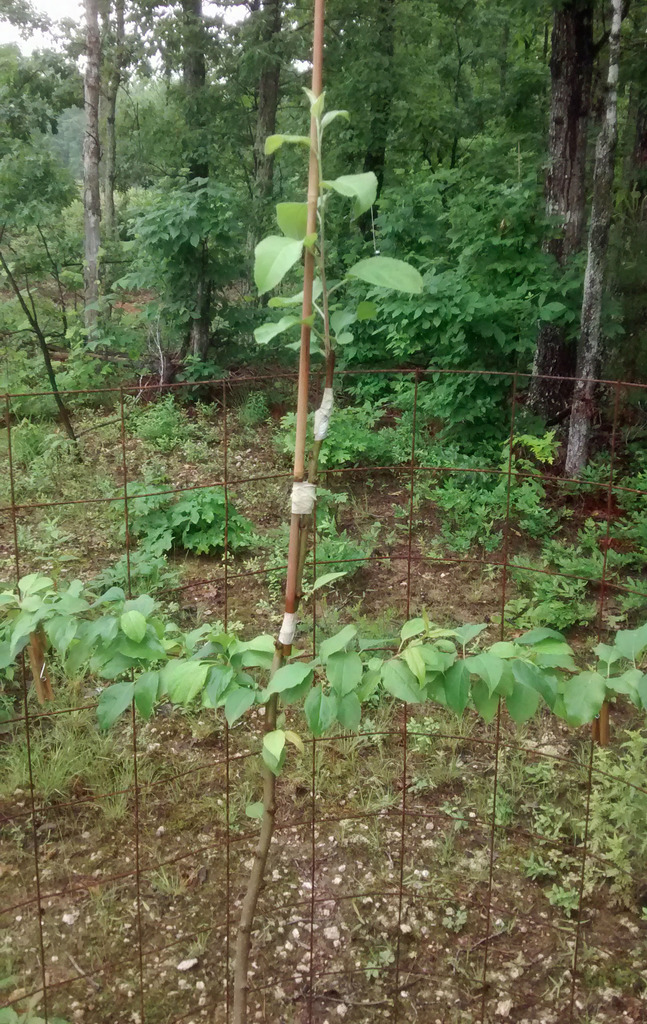-
If you are posting pictures, and they aren't posting in the correct orientation, please flush your browser cache and try again.
Edge
Safari/iOS
Chrome
You are using an out of date browser. It may not display this or other websites correctly.
You should upgrade or use an alternative browser.
You should upgrade or use an alternative browser.
Apple planning phase.... - Transfered from QDMA forum
- Thread starter yoderjac
- Start date
yoderjac
5 year old buck +
I was checking my AU buck chestnuts in cold stratification today and found some more apple seeds I had collected late. I have a boatload of apple seedlings now, but these were different varieties. They are both diploid, so I figured I'd go ahead and plant them in flats for more variety.
Thanks,
Jack
Thanks,
Jack
Knehrke
5 year old buck +
Following Jack's advice, adapted from Dr. Whitcomb, I planted crabapple seeds from a prolific but unknown variety growing on our property in mesh flats. I should have used shelf lining paper rather than wet newspaper to prevent circling, but I caught the seedlings in time. I was surprised at how quickly they threw out a tap root. I had nearly 100% germination and transplanted ten days after planting. Here's pictures of the seedlings in flats, a representative image of the taproot, and following transfer to RM18. One side of the flat is crabapple and the other is Russian Peashrub. I will follow up as they grow. Cheers!
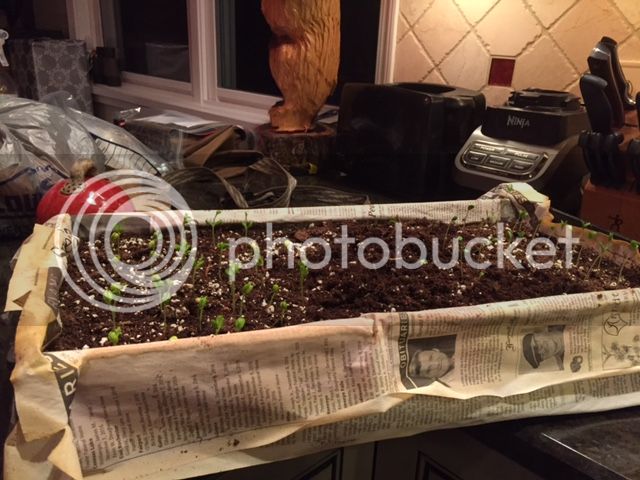
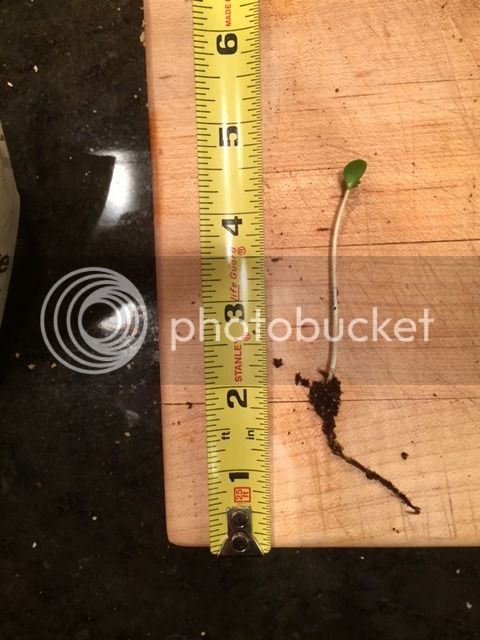
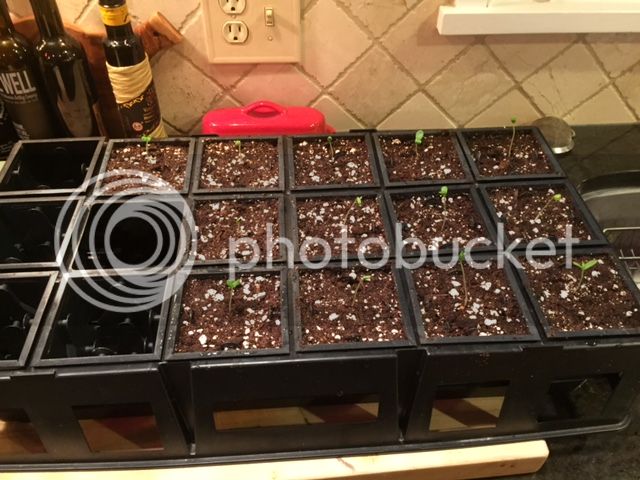



yoderjac
5 year old buck +
Great pictures, especially the tap root at transplant time. Some of mine were long enough that I was concerned they would prune in the flat. Looks like you caught yours at the ideal time to transplant.
The Jonathan and Albemarle Pippin seed are starting to germinate. I'll probably transplant them to 18s tomorrow.
Thanks,
Jack
The Jonathan and Albemarle Pippin seed are starting to germinate. I'll probably transplant them to 18s tomorrow.
Thanks,
Jack
yoderjac
5 year old buck +
Hopefully I'll do a bit better job grafting crabapples this year. I learned a bunch last year. Today, I grafted the Siberian crabs that had the grafts fail last spring. This year, I removed all of the vegetation from the trees except 1 or two nurse branches. I made sure the nurse branches are not growing above the graft and tied them down if necessary. These trees were fully leafed out. The dolgo seedlings have not yet broken leaf so I did not try to graft them.
Here is a representative pic:
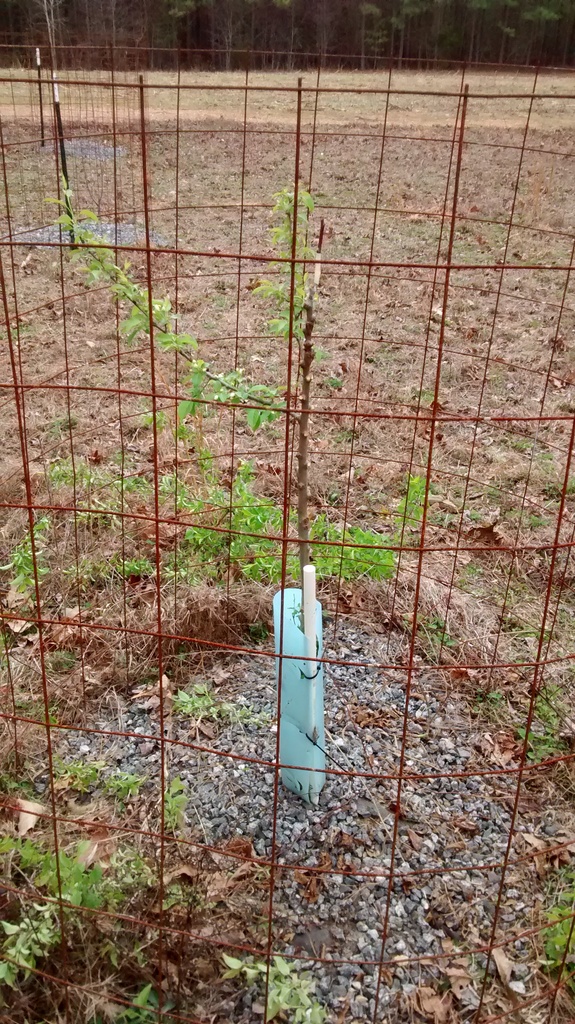
I also grafted some pear trees. My partner thought he planted Kieffer which is self-fertile, but we have only seen a couple pears on these trees which are quite large now and they don't look like Kieffer. Probably mislabeled. So, I grafted some seedlings I planted last fall and a branch or two on the mature trees to see if this helps with pollination. I used Korean Giant and Shinko scions.
Thanks,
Jack
Here is a representative pic:

I also grafted some pear trees. My partner thought he planted Kieffer which is self-fertile, but we have only seen a couple pears on these trees which are quite large now and they don't look like Kieffer. Probably mislabeled. So, I grafted some seedlings I planted last fall and a branch or two on the mature trees to see if this helps with pollination. I used Korean Giant and Shinko scions.
Thanks,
Jack
Last edited:
yoderjac
5 year old buck +
After a Dr. appointment on Wednesday, I swung past Vintage Virginia Apples and picked up some small diameter M111. Most of the grin scions I got are pretty small diameter. Given my minimal experience with grafting apples, I want to have cambium contact on both sides if at all possible. On one of the scions I used was so small that I had to use a wedge type graft and only aligned on side. The rest I was able to align pretty well on both sides. These M111 were small enough that I started them in 1 gal RB2s. I put them under lights. I'll know in a few weeks if things are looking good.
My real reason for doing this is not that I needed trees on M111, but so that I could maximize the chance of getting at least one scion to take either in the field or the bench of each variety I ordered from GRIN. Each variety has now been grafted in the field at least once and on M111 at least once.
Thanks,
Jack
My real reason for doing this is not that I needed trees on M111, but so that I could maximize the chance of getting at least one scion to take either in the field or the bench of each variety I ordered from GRIN. Each variety has now been grafted in the field at least once and on M111 at least once.
Thanks,
Jack
chickenlittle
5 year old buck +
For some small scions, I have done 2 scions in a cleft graft. Line one up on side and the other on the other side of the rootstock. You can remove one later if both take.
yoderjac
5 year old buck +
For some small scions, I have done 2 scions in a cleft graft. Line one up on side and the other on the other side of the rootstock. You can remove one later if both take.
Thanks, I've done that in the past. This time they were close enough in diameter that 2 wouldn't fit.
yoderjac
5 year old buck +
Still no signs of any success with the M111 grafts, but I finally got one in the field that is leafing out:

The graft is centennial. Still too early to declare success, but looks promising. None of the others show any signs of leafing out yet.
Thanks,
Jack

The graft is centennial. Still too early to declare success, but looks promising. None of the others show any signs of leafing out yet.
Thanks,
Jack
Last edited:
yoderjac
5 year old buck +
This is an old thread started back in 2016. The idea was to start apple trees from seed, plant them, and then graft them in the field. My grafting success was quite mixed. Only a few of those seedling grafts took each year, but I kept going back and trying again when grafts didn't take. Well, it certainly has taking a while, but I'm finally seeing apples. After the grafts took, these trees have had zero maintenance. No spraying, no pruning, no fertilizing, no nothing. That is what I want in a wildlife tree.
Well, I'm finally starting to see some marginal results from this experiment:
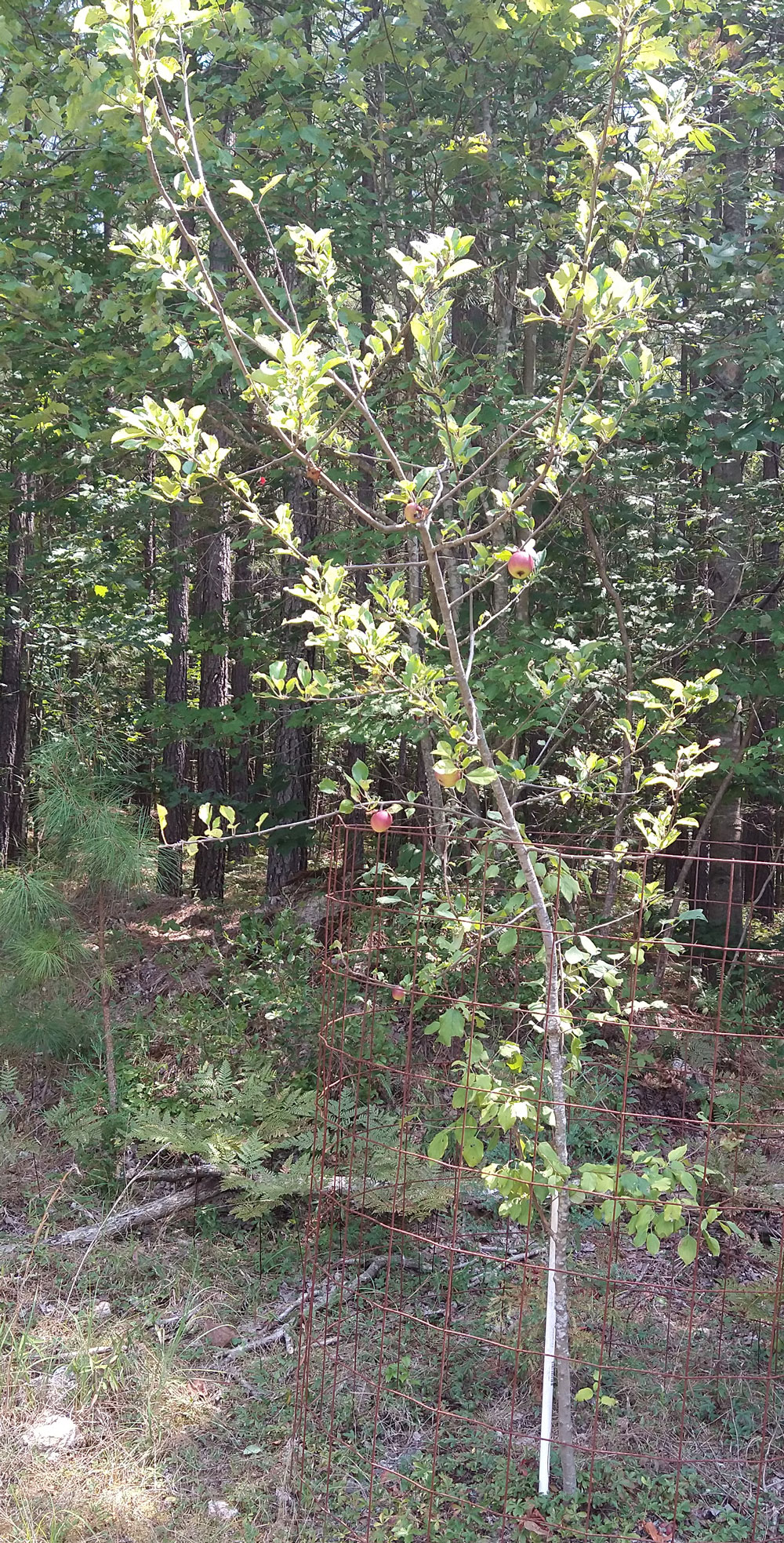
I believe this tree is Black Twig grafted on to a Siberian Red seedling. I grafted about 4' off the ground. You can see a difference in the leaves below the graft from those above it. Given that this is grafted onto a seedling rather than clonal semi-dwarf root stock, I presume it will be a full size tree and take several more years before the fruit volume become significant, but it is nice to see a little fruit!
If you want quick fruit, I would not recommend this, but if you are in it for the long run, I'd call this experiment a success.
Thanks,
Jack
Well, I'm finally starting to see some marginal results from this experiment:

I believe this tree is Black Twig grafted on to a Siberian Red seedling. I grafted about 4' off the ground. You can see a difference in the leaves below the graft from those above it. Given that this is grafted onto a seedling rather than clonal semi-dwarf root stock, I presume it will be a full size tree and take several more years before the fruit volume become significant, but it is nice to see a little fruit!
If you want quick fruit, I would not recommend this, but if you are in it for the long run, I'd call this experiment a success.
Thanks,
Jack
sandbur
5 year old buck +
Dolgo rootstock are seedlings if you wish to do some more experimentation.
I have grafted some on seedlings with mixed success. I have had better luck with growing rootsuckers from wild trees for a few years and then topworking on them.
I have also used rootsuckers from trees I purchased.
Sent from my iPhone using Tapatalk
I have grafted some on seedlings with mixed success. I have had better luck with growing rootsuckers from wild trees for a few years and then topworking on them.
I have also used rootsuckers from trees I purchased.
Sent from my iPhone using Tapatalk
yoderjac
5 year old buck +
Dolgo rootstock are seedlings if you wish to do some more experimentation.
I have grafted some on seedlings with mixed success. I have had better luck with growing rootsuckers from wild trees for a few years and then topworking on them.
I have also used rootsuckers from trees I purchased.
Sent from my iPhone using Tapatalk
Actually, with my original experiment, I grew both dolgo and siberian red from seed and planted them in the field and then top-worked them. I expected the dolgo seedlings to do better than the siberian red, but that wasn't the case for me. For some reason, I had more success grafting to siberian red. Could be they just do better in my soil. Who knows.
If you read further down in the thread, I then used seed from a a variety of domestic apples in the next year and grafted them while they were still in containers. Many of them had disease issues. A few of them did OK, but they are not far along yet. For those, I grafted a large number of GRIN scions. There is a lot of variation and many were culled. It will be interesting to watch the rest over the years. I also did graft some to semi-dward clonal rootstock for comparison over the years.
I wish I had native crabs on my land to use.
Thanks,
Jack
Similar threads
- Replies
- 9
- Views
- 360

